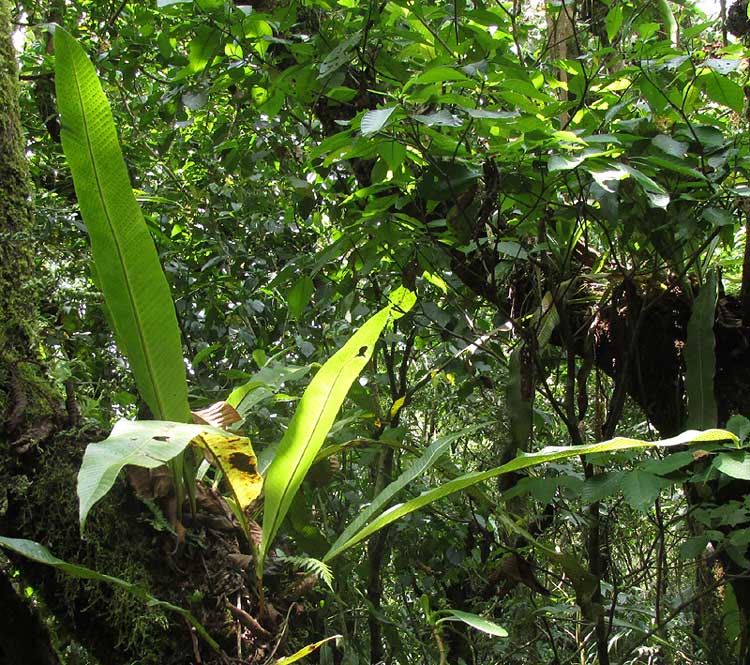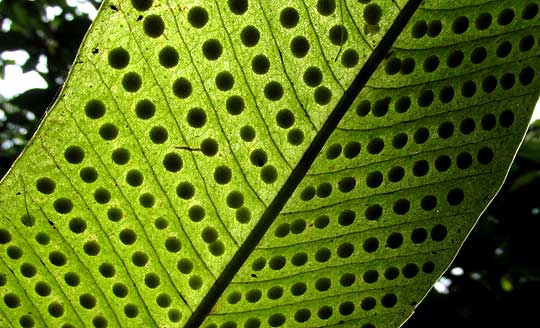Excerpts from Jim Conrad's
Naturalist Newsletter

notes from the May 3, 2015 Newsletter describing a camping trip during the last week ofin the hydrological reserve above San Andrés Tuxtla, Veracruz, México
STRAP FERN
In the last week of this April, outside the tent door at my first camping site in the hydrological reserve above and north of San Andrés Tuxtla, Veracruz -- elevation ~1180m (5900ft), ~N18.52°, ~W95.15° -- a fern grew very picturesquely on the mossy, leaning trunk of a tree. You can see it above, the picture taken through the tent door.
Several epiphytes -- plants living on other plants -- somewhat similar to this also could be seen in the area. Among them were orchids, aroids and ferns. Fortunately, this plant was prodigiously producing reproductive bodies in neat rows on the bottom surface of its arching blades, so it was easy to figure out which kind of plant it was. Below, you can see those reproductive bodies backlighted by sunlight:

The dark, round spots are sori (singular sorus), sometimes called fruit-dots. Each sorus is a compact cluster of many nearly microscopic items called sporangia, and inside each sporangium there are dust-like spores, which in nature will germinate to form new plants. In other words, our sunlight-glowing epiphyte is a fern, because ferns bear sori composed of sporangia containing spores.
Sori come in many shapes, sizes and anatomical contexts, so in fern identification usually sorus configuration is of utmost importance. Right away I recognized these round sori as practically identical to North America's common polypody ferns, and that helped a lot in tracking down this fern's identity.
It's a kind of strap fern, genus Campyloneurum, in the same fern family as North America's polypodies, the Polypodiaceae. Between 25 and 50 strap fern species are known, depending on your expert. All occur in the tropical and subtropical Americas, and their taxonomy isn't well understood. On the basis of this fern's size and the configuration of its sori, my guess is that this is CAMPYLONEURUM COSTATUM, sometimes known as the Tailed Strap Fern, occurring from southern Florida south to northern South America, including the Caribbean area.
The main feature separating it from other similar species is that its sori are lined up in only one line, not two or more, between the frond's secondary veins. A better known species, Campyloneurum phyllitidis, often grown in pots and in tropical gardens, has two rows of sori between each pair of secondary veins, and that's the same case with C. xalapense, known to grow in this area.
Whatever its name, it certainly is a pretty fern when growing in the wild in a random beam of sunlight.